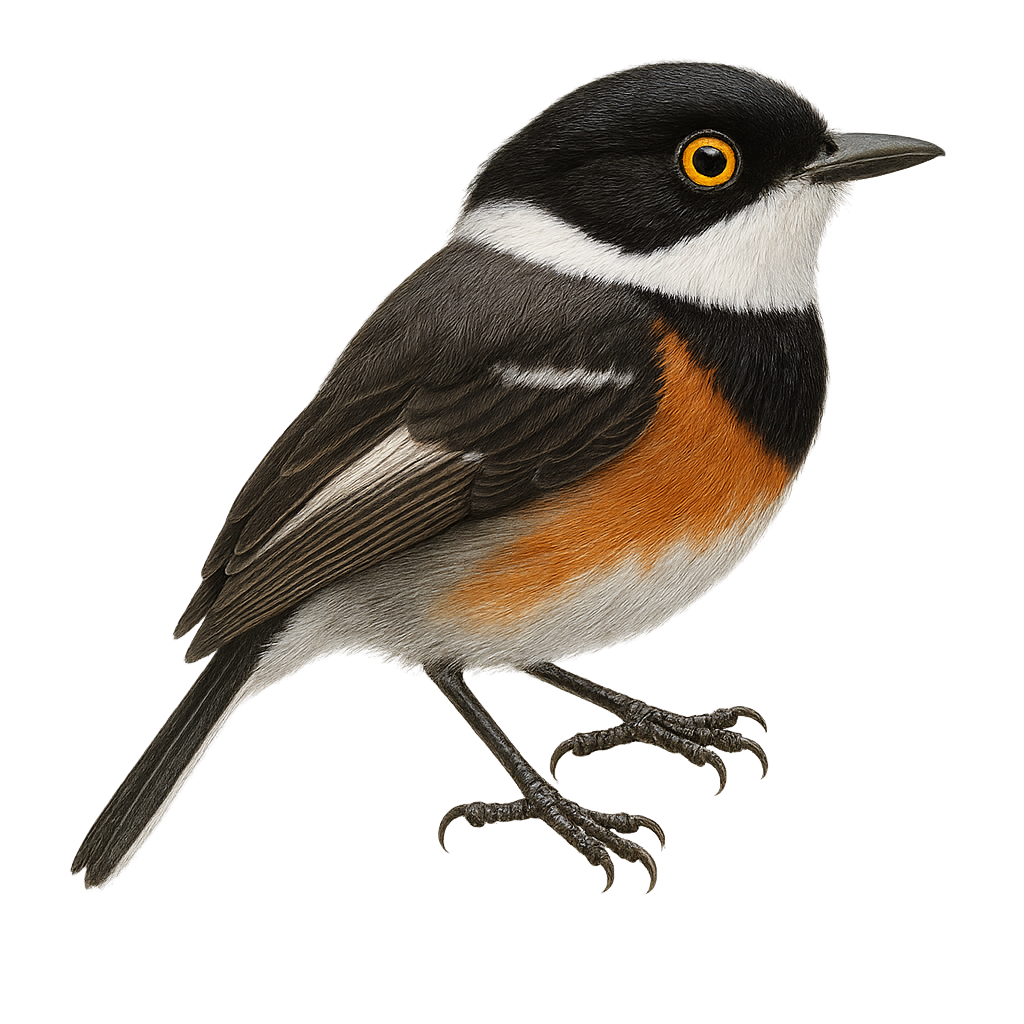Your wildlife photography guide.
Explore the cape batis in detail, study its behavior, prepare your shots.
Where to observe and photograph the cape batis in the wild
Learn where and when to spot the cape batis in the wild, how to identify the species based on distinctive features, and what natural environments it inhabits. The WildlifePhotographer app offers tailored photography tips that reflect the cape batis’s behavior, helping you capture better wildlife images. Explore the full species profile for key information including description, habitat, active periods, and approach techniques.
Cape Batis
Scientific name: Batis capensis

IUCN Status: Least Concern
Family: PLATYSTEIRIDAE
Group: Birds
Sensitivity to human approach: Suspicious
Minimum approach distance: 5 m
Courtship display: October to November
Incubation: 14-16 jours
Hatchings: October to December
Habitat:
Forests, thickets, gardens
Activity period :
Primarily active during the day, with peak activity in the morning and late afternoon.
Identification and description:
The Cape Batis is a small passerine bird native to southern Africa. It is noted for its colorful plumage, featuring a black head, white belly, and a bright orange breast band. Males and females exhibit sexual dimorphism, with females having slightly duller colors. This bird is often found in forests, thickets, and gardens, where it primarily feeds on insects. Known for its melodious songs and territorial behavior, the Cape Batis is a sedentary bird, although it may undertake minor altitudinal migrations depending on the season. Its population is stable, and it is not currently threatened.
Recommended lens:
400 mm – adjust based on distance, desired framing (portrait or habitat), and approach conditions.
Photography tips:
To photograph the Cape Batis, it is advisable to use a telephoto lens of 400mm or more to capture precise details without disturbing the bird. Look for it in forests and gardens, where it is often active during the day. Be patient and wait for it to perch on an open branch. The natural light of the morning or afternoon is ideal to highlight its bright colors. Use a fast shutter speed to freeze its quick movements.
The WildlifePhotographer App is coming soon!
Be the first to explore the best nature spots, track rutting seasons, log your observations, and observe more wildlife.
Already 1 430 wildlife lovers subscribed worldwide

